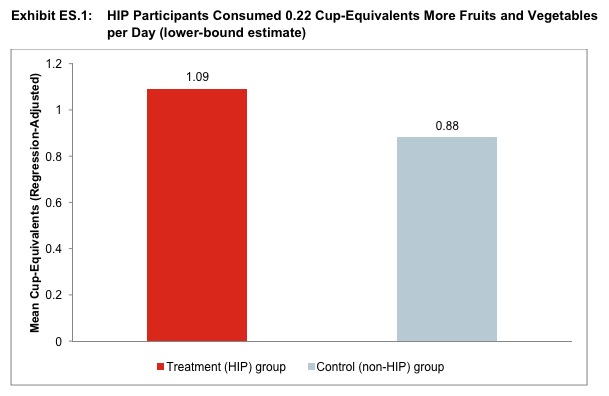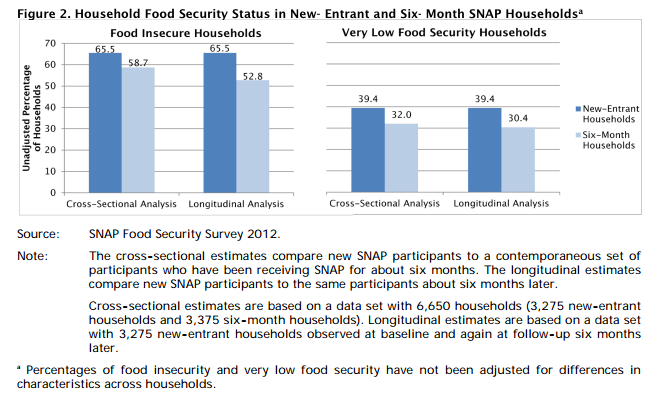8.6.2013 Over the past month, two new USDA evaluations of SNAP demonstrate the important role that benefits play in reducing food insecurity and can play in improving nutrition. Below is a summary of the reports that show how critical SNAP is. As Congress threatens to make significant cuts to SNAP in the Farm Bill, this research reinforces the important role that SNAP plays in today’s safety net.
Healthy Incentives Pilot (HIP) Interim Report Link
After 4 to 6 months of implementation of the HIP, in which participants receive an additional 30 cents in SNAP benefits for every SNAP dollar they spend on fruits and vegetables, HIP participants reported increased fruit and vegetable consumption.
- HIP participants consumed 25 percent more fruits and vegetables per day compared to non-participants.
- 95 percent of HIP participants that were surveyed wanted to continue participating in HIP.
- 70 percent of HIP households indicated that fruits and vegetables were more affordable because of HIP

Measuring the Effect of SNAP on Food Insecurity Link
This evaluation demonstrates the association between SNAP participation and decreasing levels of food insecurity.
- Six months of SNAP participation was associated with a 5 – 10 percentage point decrease in food insecurity among study participants.
- SNAP participation was associated with improved food security among most subgroups, including households with children.
- SNAP participation was associated with improved food security among all SNAP households except those receiving the minimum monthly allotment.
- There was mixed evidence regarding whether SNAP participation is associated with changes in household spending on food.





